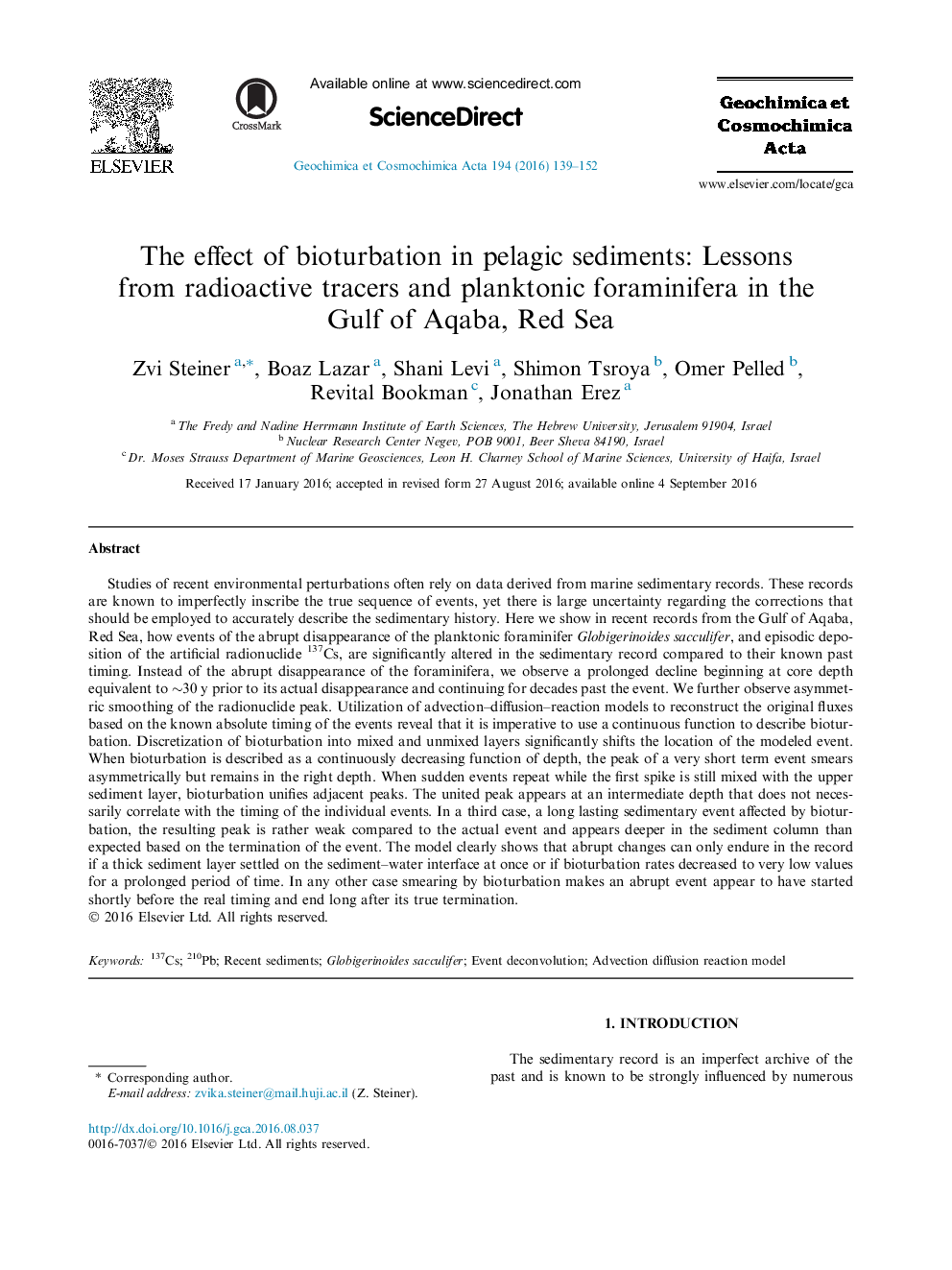| کد مقاله | کد نشریه | سال انتشار | مقاله انگلیسی | نسخه تمام متن |
|---|---|---|---|---|
| 6437155 | 1637963 | 2016 | 14 صفحه PDF | دانلود رایگان |
Studies of recent environmental perturbations often rely on data derived from marine sedimentary records. These records are known to imperfectly inscribe the true sequence of events, yet there is large uncertainty regarding the corrections that should be employed to accurately describe the sedimentary history. Here we show in recent records from the Gulf of Aqaba, Red Sea, how events of the abrupt disappearance of the planktonic foraminifer Globigerinoides sacculifer, and episodic deposition of the artificial radionuclide 137Cs, are significantly altered in the sedimentary record compared to their known past timing. Instead of the abrupt disappearance of the foraminifera, we observe a prolonged decline beginning at core depth equivalent to â¼30Â y prior to its actual disappearance and continuing for decades past the event. We further observe asymmetric smoothing of the radionuclide peak. Utilization of advection-diffusion-reaction models to reconstruct the original fluxes based on the known absolute timing of the events reveal that it is imperative to use a continuous function to describe bioturbation. Discretization of bioturbation into mixed and unmixed layers significantly shifts the location of the modeled event. When bioturbation is described as a continuously decreasing function of depth, the peak of a very short term event smears asymmetrically but remains in the right depth. When sudden events repeat while the first spike is still mixed with the upper sediment layer, bioturbation unifies adjacent peaks. The united peak appears at an intermediate depth that does not necessarily correlate with the timing of the individual events. In a third case, a long lasting sedimentary event affected by bioturbation, the resulting peak is rather weak compared to the actual event and appears deeper in the sediment column than expected based on the termination of the event. The model clearly shows that abrupt changes can only endure in the record if a thick sediment layer settled on the sediment-water interface at once or if bioturbation rates decreased to very low values for a prolonged period of time. In any other case smearing by bioturbation makes an abrupt event appear to have started shortly before the real timing and end long after its true termination.
Journal: Geochimica et Cosmochimica Acta - Volume 194, 1 December 2016, Pages 139-152
